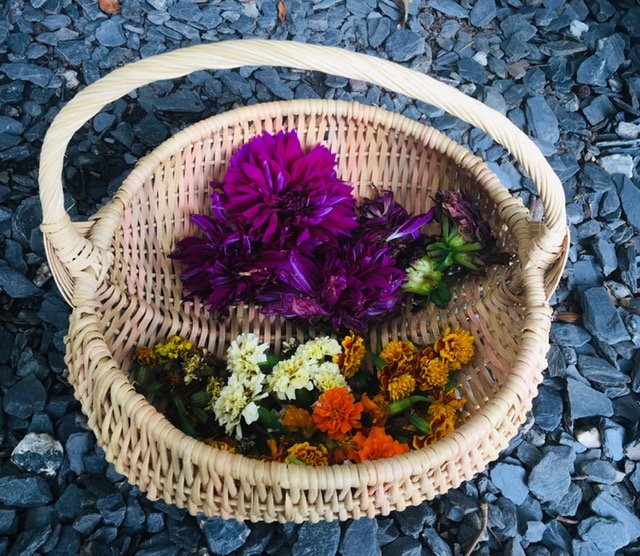by Amanda Whitfield
This post contains affiliate book links that support Conscious Costume’s programming.
As a costume designer and technician, I rely on the natural dye process of coffee and tea for dipping down bright whites to a softer tone and breaking down textiles when distressing clothing for film and stage. That had been my extent of natural dyeing experience until a few years ago when I started to find great joy in forging for plants. Initially, the excitement of forging started with finding wild blackberries, honeysuckle, dandelion, and chanterelle mushrooms to incorporate some whimsy in the kitchen and create flower essence for the bath. As I incorporated the grounding practice of forging into my homelife I started to get excited about abundance practice that I could incorporate into my work life.
I discovered some history of natural dyeing when visiting heritage sites, art centers, and local museums in the Blue Ridge Mountains just a few hours north of Atlanta. I’ve learned that plant matters: you can’t just pick any plant, flower, or berry and expect the color to bond to fiber. I’ve been studying plants to grow and gather that will be easy to incorporate into my flow.
As I learn more about natural dyeing and the revival of natural dyes, a lot of lore and recipes are handed down and practiced across cultures from antiquity. This winter I found an abundance of black walnut and lichen on a hike in Hayesville, NC. The Appalachian Mountains were home to the dominant Cherokee Nation who utilized black walnuts for dyeing.
Foraging is a beautiful practice that connects me to nature. It comes with responsibility: take only what you need and no more than one third of the plant. You leave a third for the animals to eat and the remaining third for the earth to regenerate. Some of my favorite plants to forge for dye include: pecan, dandelion and goldenrod. I also save my avocado skins and pits in the freezer to use for a soft pink dye bath.
In addition to foraging and collecting plant matter you can grow a dye garden! Marigolds I planted last May bloomed until November with the Atlanta climate and are the easiest to grow. I also planted dahlias, gladiolas, and a eucalyptus tree last spring and have been gathering, drying, and storing the plant matter as I learn more about the mordants needed to make natural dyes stick. You can plant marigolds in a container or as a great addition to your vegetable garden. Not only do they deter pests and animals from eating your garden they smell amazing and can be used for flower essences and energy healing. What I love most about this study is that it allows me to slow down, experiment, and have full creative freedom. Fiber and mordants play a role with pigment, vibrancy, and making the color stick.
Suggested Reading:
The chart below is a color reference to get you started. If you are looking for a nature escape and to do some foraging check out my cabin rental in Murphy, NC on Instagram @TheCabinEffect, you can follow me @CostumeNotions. Happy Dyeing!
Getting Started: NATURAL DYE COLOR CHART
Amanda Whitfield is an Atlanta based Costume Designer and the Costume Shop Manager at Theater Emory. Her work spans Theater, Film, Dance, Academia and Apparel.

























